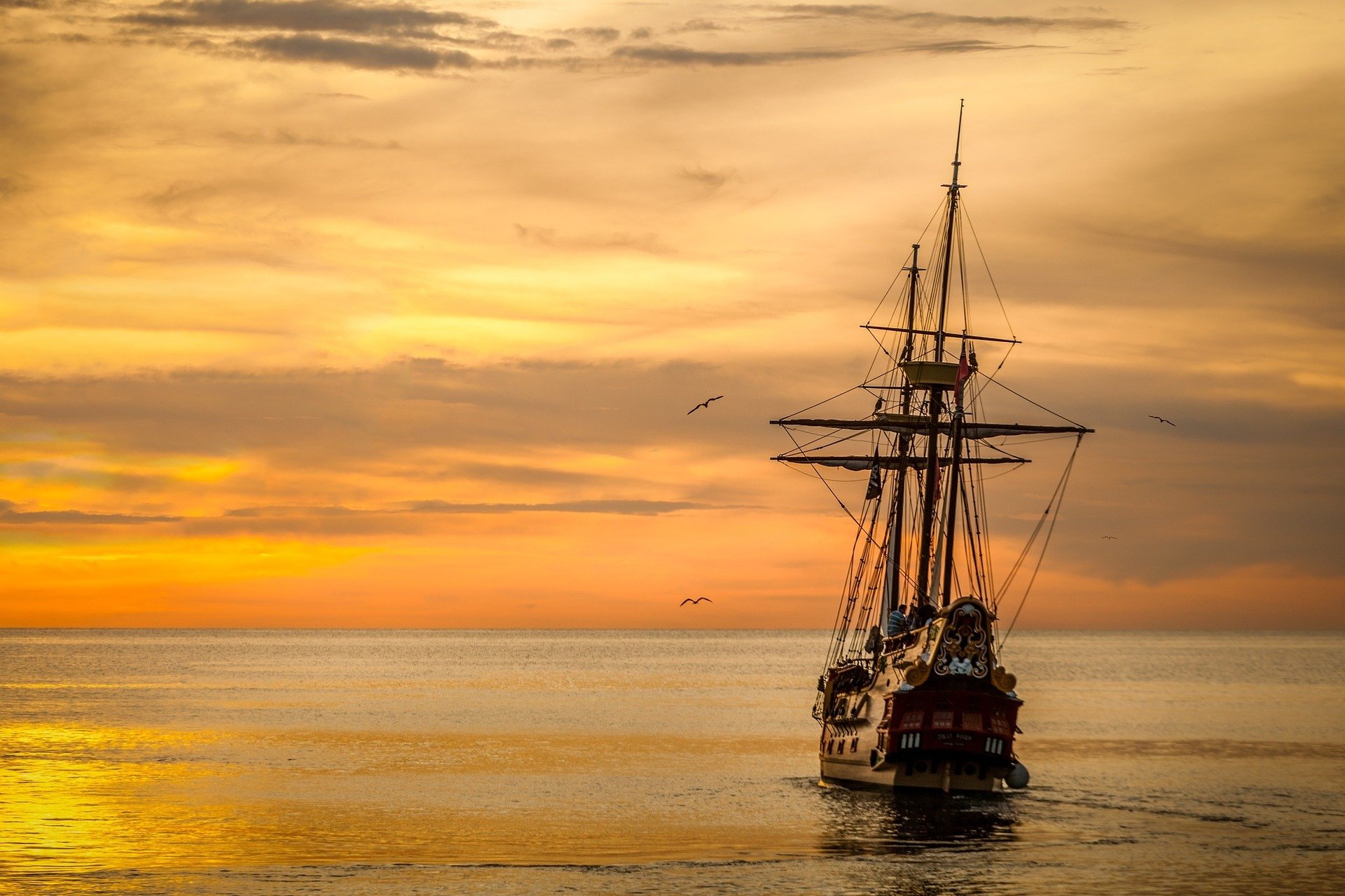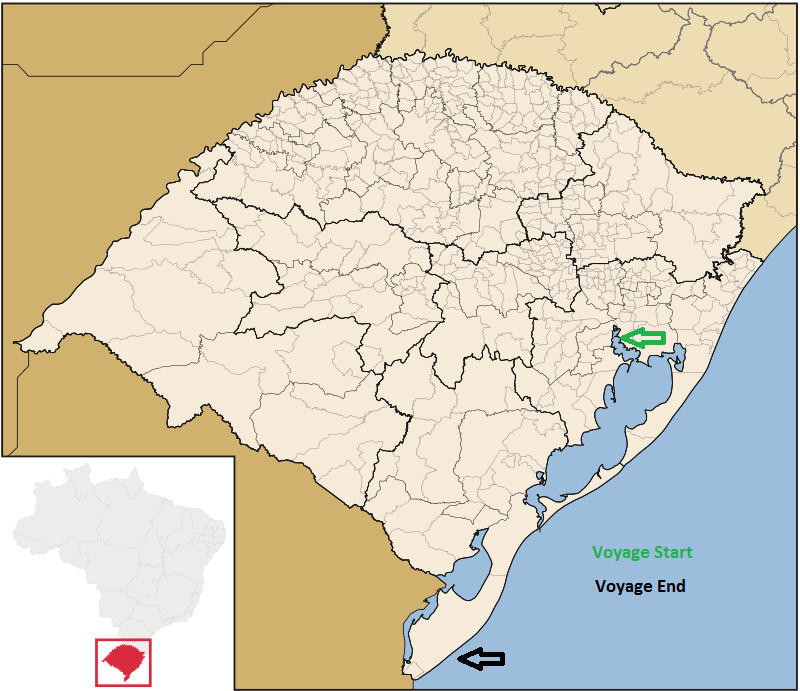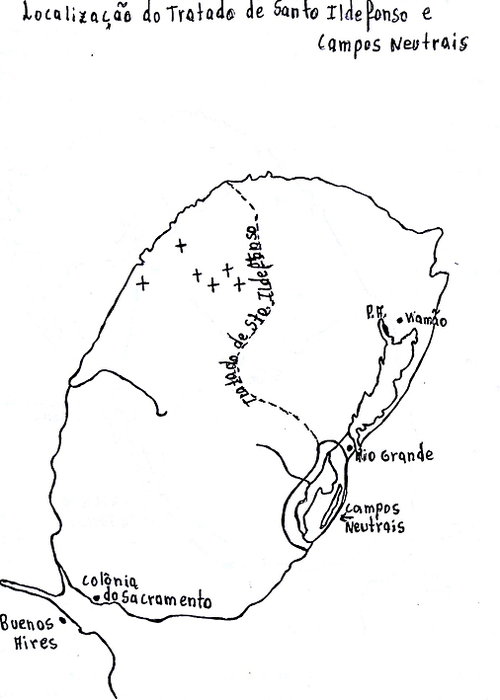Hello mighty readers! Do you like shipwreck stories. Check this one from the 19th century.
Heyho good people, on this post I'd like to bring something a little different, somewhat relevant historically, interesting and related to story telling.
If you haven't noticed I'm hugely interested in everything that comes from the sea; big adventures, wrecks, lighthouses and boats. By the way have you checked my post about lighthouses?
Discovering Lighthouses | Photography | Share Yours Down Below
But Arthur, what all that have to do with travel blogging? Everything!
For me traveling is not only sharing beautiful pictures of the most trendy places, it's about learning about all those places and discovering peculiarities in its history, isn't that cool? This is what I want with today's post, to show you my region, together with some story telling.
I'll go through a bit of writing about my state, Rio Grande do Sul (Brasil), to explain its Atlantic coast and all the dangers it represents to navigation, then I'll tell you a curious story of a 19th century shipwreck, which was involved in tension between Brazil and England. I hope you enjoy it.
Without further ado, let's get to the story.

Image Source: User 851878 on pixabay.com
SHIPS CEMETERY
Before we enter into the especific shipwreck story, I think it's important that you locate yourself in the map and understand a little bit of why our coast is so dangerous. It'll make the reading longer, but not less interesting. If you want you can skip directly to the wreck story.

Click image to enlarge!

Click image to enlarge!
The coast of Rio Grande do Sul is about 600 km long and practically rectilinear, sandy and of low altitude, with no notable aspects for navigation, such as bays and sheltered harbors. The only harbor is located in the city of Rio Grande and its entrance was known to be one of the hardest to enter, due to geografical changes on the botton. It got better in the 1910's with the construction of a long rock channel to estabilize the passage, however, to this day it represents a challenge for small boats during heavy weather.
The waters on the coast are of brown tonality, which has to do with the greater amount of nutrients and the difference of depth of the platforms. The continental platform in the south is shallower, more affected by currents, winds and waves which make the waters more turbid by the constant movement of the marine sediments. This characteristics makes it difficult for navigators along the coast to set a reference point. It was a nightmare until 1820, when a series of lighthouses were build along the coast to guide the ships, which doesn't mean it became easier to navigate, you'll see why later.
Also on the coast of Rio Grande do Sul, one of the prevailing winds during the winter is the so-called "carpenter of the beach", or simply "carpenter", which blows from the ocean to the continent perpendicular to the coast, coming from the southeast. Back in those days the "carpenters" were difficult to predict due to the absence of islands where meteorological observation stations could be set up.
All those factors allied with lack of modern technology, contributed to turn our coast into what is called the "Ships Cemetery". There are more than 250 ship wrecks registered and many more that we'll never know of.
THE NEUTRAL FIELDS
This bit of history plays an important role into the shipwrecks, it's full of romance and myths and is of absolute relevance for this story.
The origin of the neutral fields comes from a long time ago. In 1777, the empires of Spain and Portugal signed the Treaty of Santo Ildefonso, ending the dispute for the possession of Colonia del Sacramento, which remained with the Portuguese and, in 1828, came to belong to Uruguay. Between the two territories, a strip of land remained, limited by the Mirim Lagoon, Mangueira Lagoon and the maritime coast, which became known as Campos Neutrais (Neutral Fields). There, neither Portuguese nor Spaniards could build settlements and fortresses. Over time, the area became a kind of no-man's land, a smuggling zone and a haven for criminals.

Click image to enlarge!
Regional tales say that for more than two hundred years, in the Neutral Fields, brigands placed torches on oxen horns to simulate the existence of lighthouses and divert ships from their routes. Driven by strong winds, huge waves and treacherous sandbanks, dozens of ships could not resist and wrecked or stranded on the shore, making them easy prey for the armed groups that terrorized this no-man's land.
From a geographical point of view, today the territory includes spaces where the municipalities of Chuí and Santa Vitória do Palmar are located, as well as the Taim Reserve. These regions are now home for migratory birds that cross the continent to escape the cold of the Northern Hemisphere, creating a life environment of rare beauty. But the dangers of the sea continue, justifying the fame of ships cemetery, which runs through the centuries.
THE PRINCE OF WALES WRECK

Click image to enlarge!
Ships Running Aground in a Storm by Ludolf Backhuijzen (1649–1707). Source: Wikipedia commons.
The Prince of Wales was a comercial sailboat with 4 masts built in 1857, it used to carry goods to South America with connections at the La Plata river, Brazil and eventually in the Caribbean. Even though this is a true story and the dates are accurate, the true facts remain a mistery to this day. Hence, I've had to make an adaptation based on what I could find, in order to make it more interesting.
April 2nd, 1861. The British merchant Prince of Wales had left Glasgow, Scotland, to the city of Buenos Aires, Argentina, with cargo of carbon, ceramics, textiles, olive oil and wine. The Atlantic crossing had been quiet and the entrance to the Lagoa dos Patos was done without incidents. By the early days of April, the ship was ready to departure from the port of Porto Alegre, to go to Buenos Aires.
It was winter and the famous deadly coast was roaring its strong winds; the land, on the distance, could not be seen through the high waves. The crew was scared of ending up in the neutral zones, known to be dangerous, isolated and inhabitated by thiefs.
- Captain, the weather is too rough! We should go back... - The navigation officer said.
- Absolutely not. We are a couple miles away from the La Plata entrance, going back now will imply following the storm. We need to cross it. Keep the course. - The Captain said.
The southeast winds slowing down the ship, big waves hitting the upper decks. On those conditions the Prince of Wales kept its course along the death coast, fighting against that winter storm. The Captain, along with the navigation officer, couldn't see the coast and the instruments were hard to read.
Little did they know that their fate was sealed, the death coast was calling Prince of Wales.
June 7th, 1861. The ship ran aground on the vast coast of the province of Rio Grande do Sul, at a distance of 87 km from the Arroio Chuí - the limit line between Brazil and Uruguay. Those were the days where communication was inexistent on those lands and the only way they could find some help was by walking miles and miles through the sandy dunes of that enormous and dangerous coast.
The crew impsovised ropes to leave Prince of Wales, their plan was to walk in either direction to find help.
Unfortunately they never reached their destinations.
June 18th, 1861. The British consul in Rio Grande, Henry Prendergast Vereker, went on a search for the ship wreck with a group of men. When they got to the Prince of Wales they found out that all the passengers and crew were dead, including Captain John McKinnon. All over the coast many of the barrels had been forced and emptied of their contents, which appeared to be an robbery.
The deadly coast had done another victim.
THE CHRISTIE CASE
Click image to enlarge!
Christie case by Victor Meirelles de Lima (1838-1900). Source:Wikipedia commons.
You thought it was over, right?
The true wreck story of the Prince of Wales culminated into a conflictive diplomatic relation between Brazil and the United Kingdom. It occurred during the Second Reign, in the year 1863, resulting in the breaking of diplomatic relations between the two nations. The relations were restored only in 1865.
The name "Christie Case" comes from the British ambassador in Rio de Janeiro, William Dougal Christie, the man who intermediated the negociations regarding the Prince of Wales wreck and the one who demanded immediate formal apologies and indenization for the supposed robery.
It's important to notice though, that relations between Brazil and UK had been delicate for years. Here are the reasons, Prince of Wales was not the first, nor the last.
- The British were against the slave trade, still practiced by Brazil at that time.
- In 1844, the Brazilian government did not renew the trade agreement with the United Kingdom. This treaty gave British merchants advantages on Brazilian soil. This position of the Brazilian government generated displeasure among the British at that time and in the following years.
- In 1845, the United Kingdom, through its Parliament, approved Bill Aberdeen. This law prohibited the slave trade and gave the British navy the right to seize slave ships in the Atlantic Ocean. This affected Brazil.
- In 1861, Prince of Wales sank on the coast of Rio Grande do Sul. The British ambassador demanded indemnity.
- In 1862, British sailors were arrested in the city of Rio de Janeiro for promoting fights. They were released, but Ambassador William Christie demanded the dismissal of the arresting officers and immediate compensation for the cargo stolen from Prince of Wales wreck the prior year.
- As the Brazilian government did not meet the demands of the British ambassador, he ordered that warships of his country imprisoned Brazilian ships in the port of Rio de Janeiro.
- In 1863, Dom Pedro II ordered the payment of the indemnity of the cargo stolen from the English ship, but demanded official apology from the British regarding the imprisonment of the Brazilian ships. Facing the British refusal, the Brazilian government broke diplomatic relations with the British.
In the end everything turned up fine, but the poor Prince of Wales entered the statistics of the death coast. This tale is widely spreaded by people living in this region, and some of them say that on the right location, under low tide, it's possible to see the remains of what, one day, almost caused a war between Brazil and UK.
Rest in Peace all the victims of the vessel Prince of Wales.
This post is a compilation of stories written in portuguese that were researched, translated and adapted by me. If you find any irregularities, please, inform me immediately and I will remove. This is also a very resumed version of a quite long story, if you want to know the full version I'll leave the sources below.
Sources:
Prince of Wales: A perigosa costa e a diplomacia dp Brasil.
Onde ficavam os Campos Neutrais
Porto Alegre: Cemitério de Navios na Costa do Rio Grande do Sul
Have you enjoyed this ship wreck story? Do you have any story to share? Drop it on the comments down below, I love hearing them.
I hope you've enjoyed this post. If you liked it, consider giving your upvote for a hot coffee.
~Love ya all,

Disclaimer: The author of this post is a convict broken backpacker, who has travelled more than 10.000 km hitchhiking. Following him may cause severe problems of wanderlust and inquietud. You've been warned.

I'm Arthur. I blog about Adventure Stories, Brazil, Travel, Camping & Life Experiences.
Follow me to stay tuned for more craziness and tips.

You may also want to read:
Discovering Lighthouses | Photography | Share Yours Down Below
Photo Series #66: Itaimbezinho Canyon | Brazil | Would you step there?
Travel Story: 10 Hours Boat Trip to Chiloé - Chile
Photo Series #65: Feeling Like An Old Nail
[Blog #11] Cycling Day | Know About My City | Beautiful Gray Day
A proud member of:

